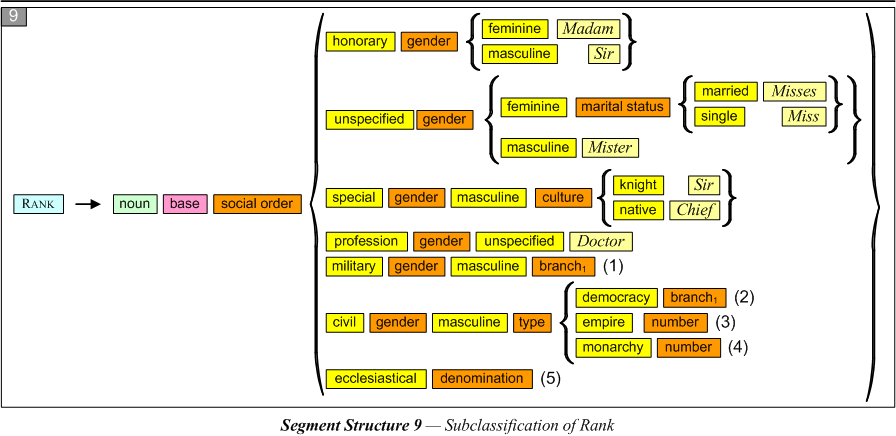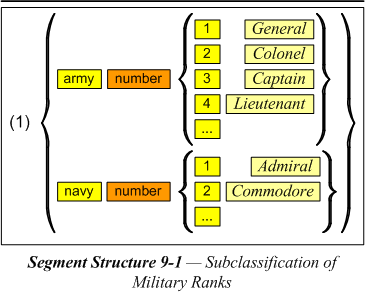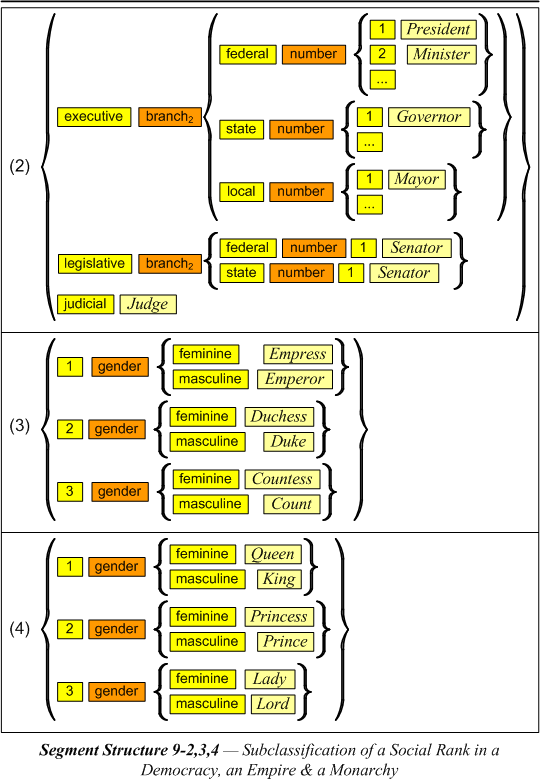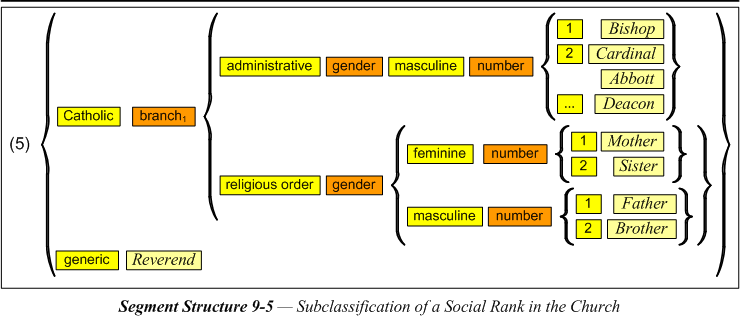
1.6 Structure of the honorific title. A person’s various forms of address constitute the person’s honorific title, which occurs prepositive to the obligatory name elements. Here are some examples to consider.
| (1) | a. | The Most Honorable David Davis | |
| b. | The Right Reverend John Norton | ||
| (2) | a. | The Honorable David Davis | |
| b. | The Reverend John Norton | ||
| (3) | a. | The Most Honorable Judge David Davis | |
| b. | The Right Reverend Mr. John Norton | ||
| (4) | a. | The Honorable Judge David Davis | |
| b. | The Reverend Mr. John Norton | ||
| (5) | a. | Hon. David Davis | |
| b. | Rev. John Norton | ||
| (6) | a. | Judge David Davis | |
| b. | Mr. John Norton |
These examples seem to be alternating variants for the same person. The phrase, consisting of an article the, an adverb most, and an adjective honorable, is a rather commonly occurring phrase structure in English. The only difference here seems to be the reduced possibilities as to which words might appear. Apparently only the definite article along with a handful of adverbs and certain attributive adjectives are allowed. Notice also that some nouns of rank can have the adjective phrase in front of them and some cannot. It appears that Reverend and Honorable look like adjectives when preceded by an adverb, but like nouns of rank when they are by themselves.

In the following examples there seem to be certain restrictions on which words in the honorific title phrase can occur with certain words in the postpositive title.
| (7) | a. | Sir Thomas Scott, Knight | |
| b. | Sir Thomas Scott | ||
| (8) | a. | His Royal Majesty King George the second, King of Great Britain | |
| b. | His Majesty King George the second, King of Great Britain | ||
| c. | His Royal Majesty George the second, King of Great Britain | ||
| d. | His Majesty George the second, King of Great Britain | ||
| (9) | a. | Her Excellency the Right Honorable Mary Smith, British Ambassador | |
| b. | The Honorable John Smith, American Minister |
Strictly speaking, whenever the rank or position of “Knight” is given in the title after the name, the proper term of address before the name is “Sir.” The examples in (8) include the possessive form of a personal pronoun in the third person. With “king” the form is masculine, but with “queen” it would be feminine. The example in (9a) also shows us that the two kinds of prepositive title may actually co-occur, albeit in reduced form. In order to account for co-occurence restrictions we need rules to specify features on the constituents. The requirement of this paragraph relates to the harmonization of features between those constituents that co-occur.






